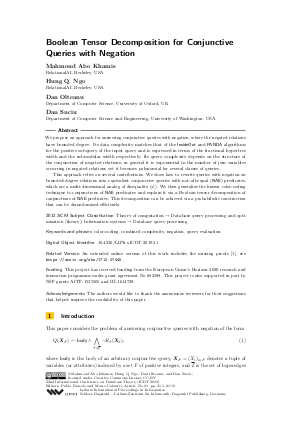LIPIcs.ICDT.2019.21.pdf
- Filesize: 0.65 MB
- 19 pages

 Creative Commons Attribution 3.0 Unported license
Creative Commons Attribution 3.0 Unported license































Feedback for Dagstuhl Publishing